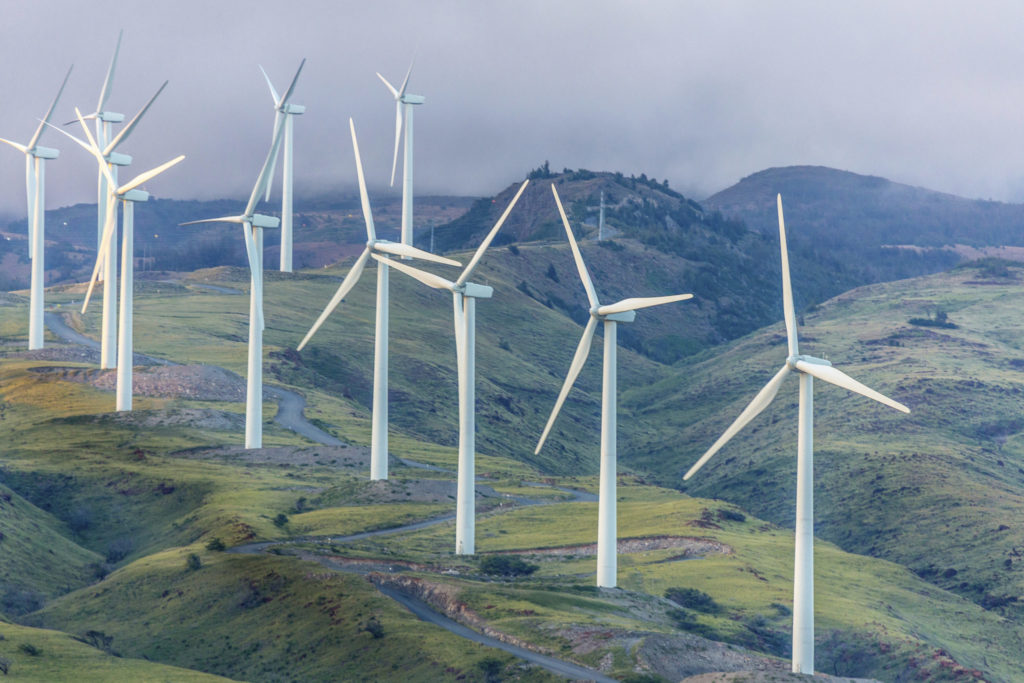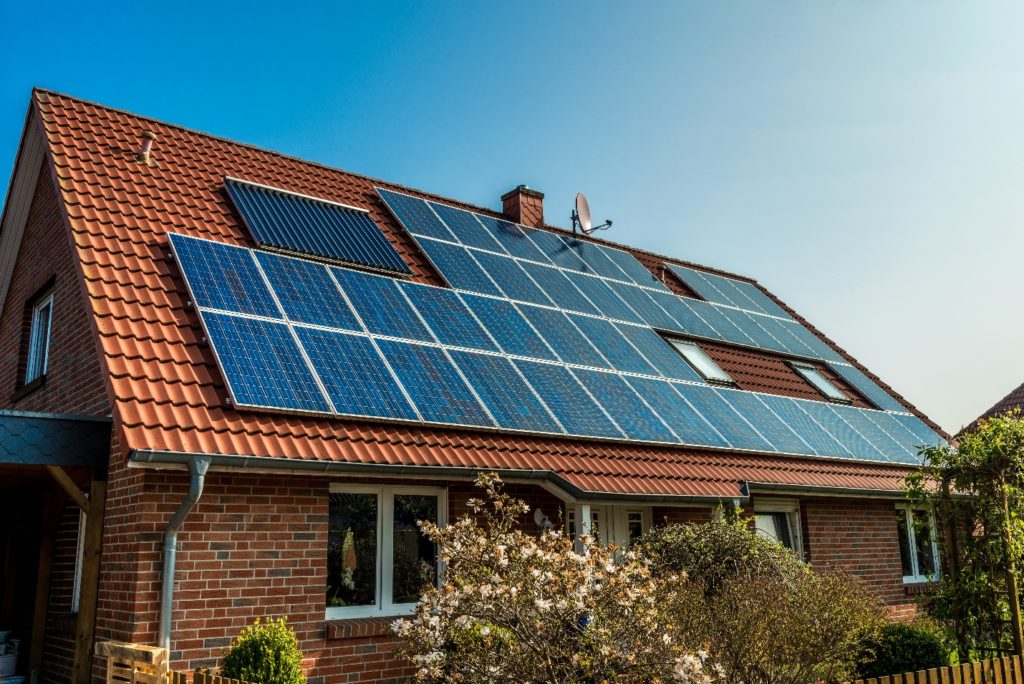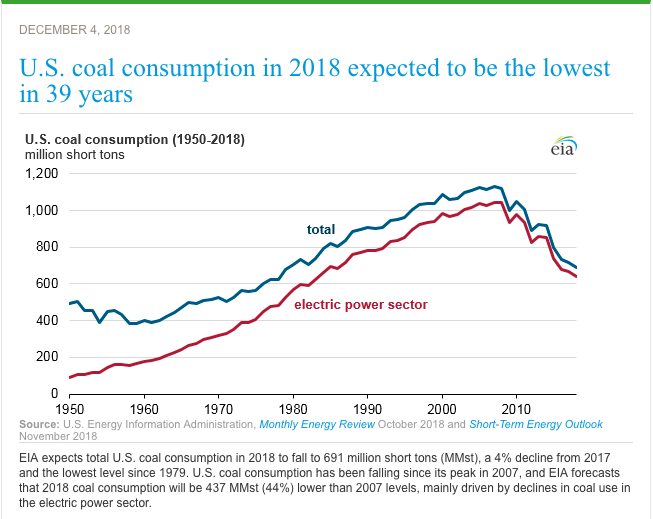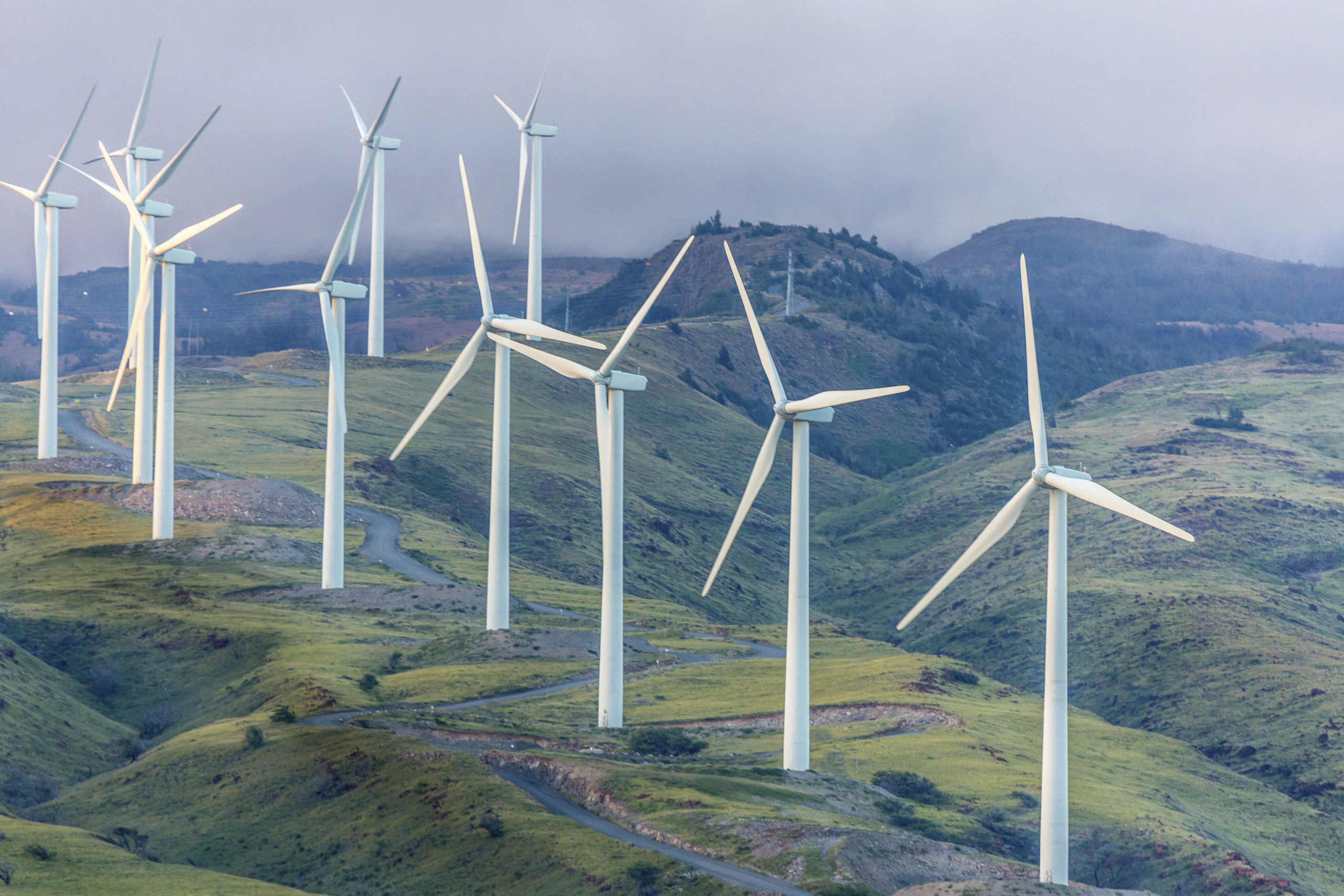Good job! Our consumer demand for clean energy has significantly reduced demand for power generated by polluting coal. Solar, wind, hydro, biomass, and geothermal energy sources combined are making a large impact in providing the energy Americans need.
Burning coal pollutes the air and generates carbon dioxide, a major cause of climate change.
Given how serious climate change is, this increased capacity in clean energy is great news!
Use of Coal-Powered Electricity Plants on the Decline in America
With the clean energy revolution is in full swing and more consumers switch to solar and wind, America’s dependence on coal is waning. According to the US Energy Information Administration, coal use in U.S. is at its lowest point in 39 years. In the year 2000, a total of 1,024 coal-powered electricity plants were in operation in the United States. By 2018, that number had decreased to 359.
In part, the decline in coal use can be attributed to natural gas. But that’s not the long-term solution to either climate change or the pollution associated with fossil fuels. Burning natural gas still sends a considerable amount of climate-changing carbon dioxide into the atmosphere.
Maybe worse, large amounts of methane gas are released into the air during “fracking,” the destructive process of hydraulic fracturing used to extract natural gas from underground shale formations. In fact, though methane gas accounts for only about 15% of greenhouse gas emissions, it lasts longer in the atmosphere, so can actually be worse for climate change than CO2. Plus, fracking pollutes groundwater and creates terrible air pollution around its facilities, many of which are located near schools and in the heart of communities.
What’s So Bad About Fracking? Here’s What You Need to Know.
Clean Energy Capacity Matching That of Coal
The Federal Energy Regulatory Commission (FERC) tracks the capacity of different energy sources. The April and May 2018 capacity reports show that renewable energy sources are on par with that of coal, both having around 20-22% of power producing ability.
For renewables, wind and water lead the way by together providing about 75% of the total renewable energy capacity. Eight of the ten largest wind farms in the world are located in the U.S. Five of those are in Texas. The largest wind farm in the world is located in Kern County, California. It has the capacity of creating 1,020 MW, with expansion plans to raise its capacity to 1,550 MW.
Solar has added 200 new units so far this year. This gives solar an additional 1,964 MW of capacity, allowing it to account for 2.83% of America’s total power generating ability. Con Ed, a large U.S. utility company, is the second largest solar energy provider in North America. In 2018, they acquired wind and solar projects worth 2.1 billion dollars.
Their total clean energy capacity now can reduce carbon emissions by 5.4 million metric tons each year. That is equivalent to removing 1.2 million cars off of the highway.
The present issue with renewable energy power production is that the capacity is not being used. But with the ever-present public and state pressure for green energy, power producers will continue to scale up their use of renewables.
It’s only a matter of time before clean energy production will permanently bypass that of coal.




















